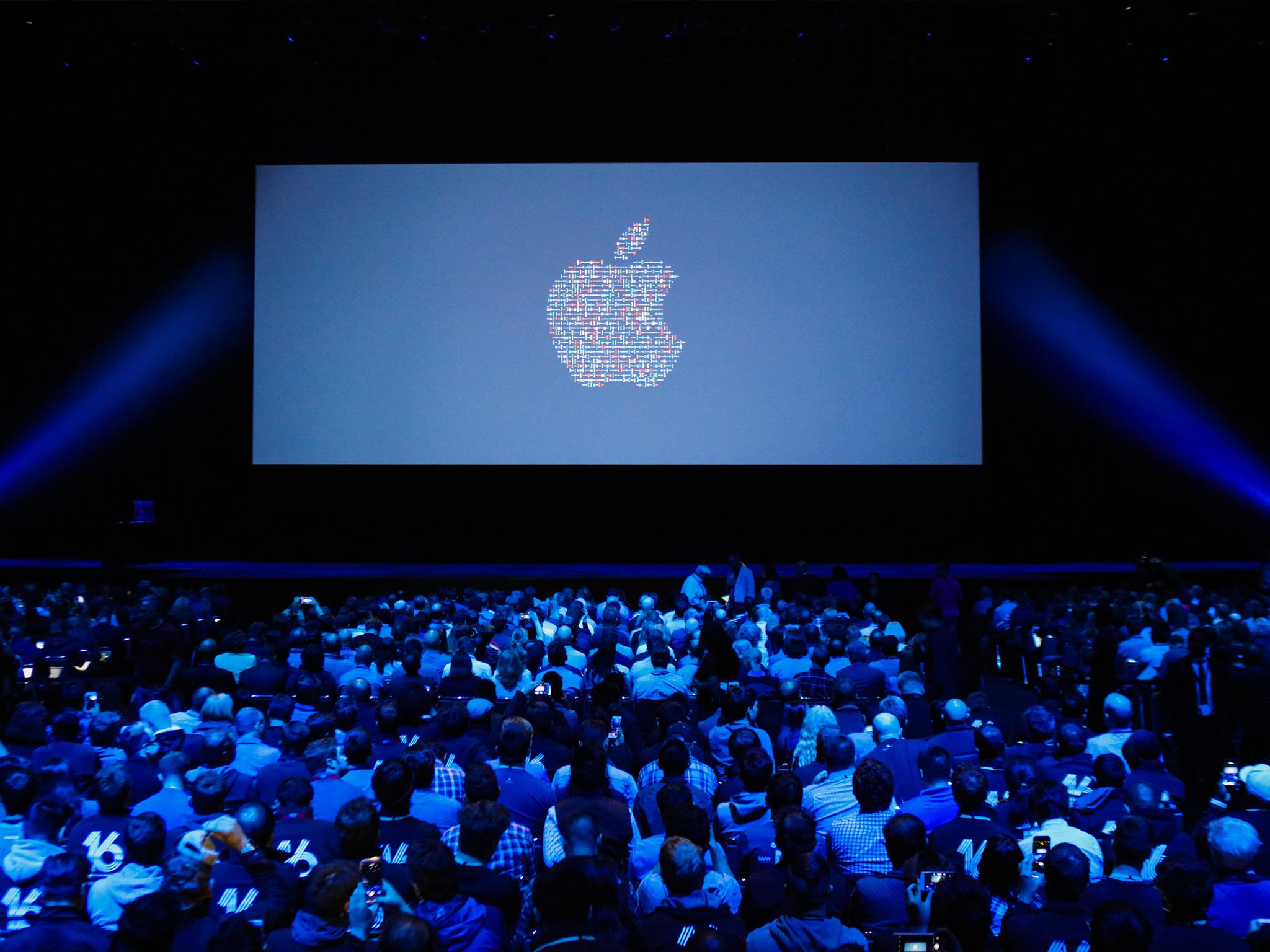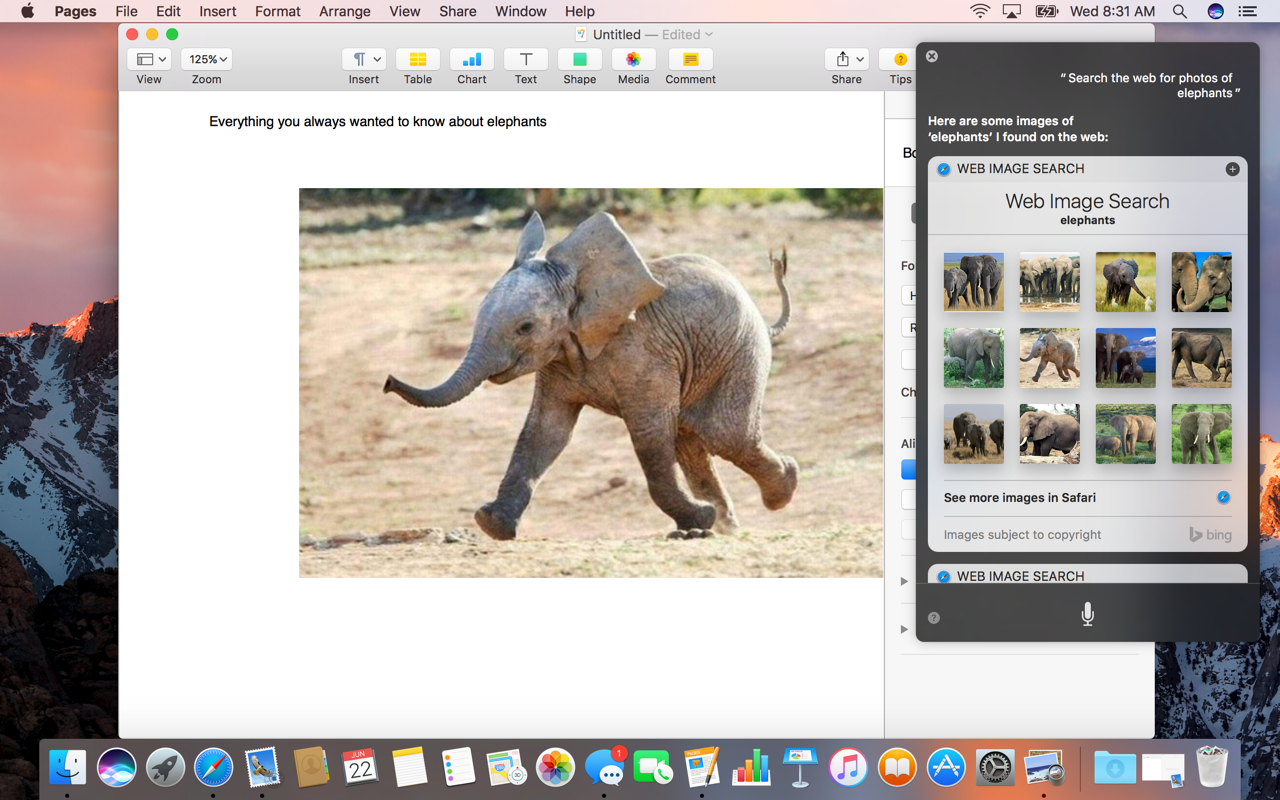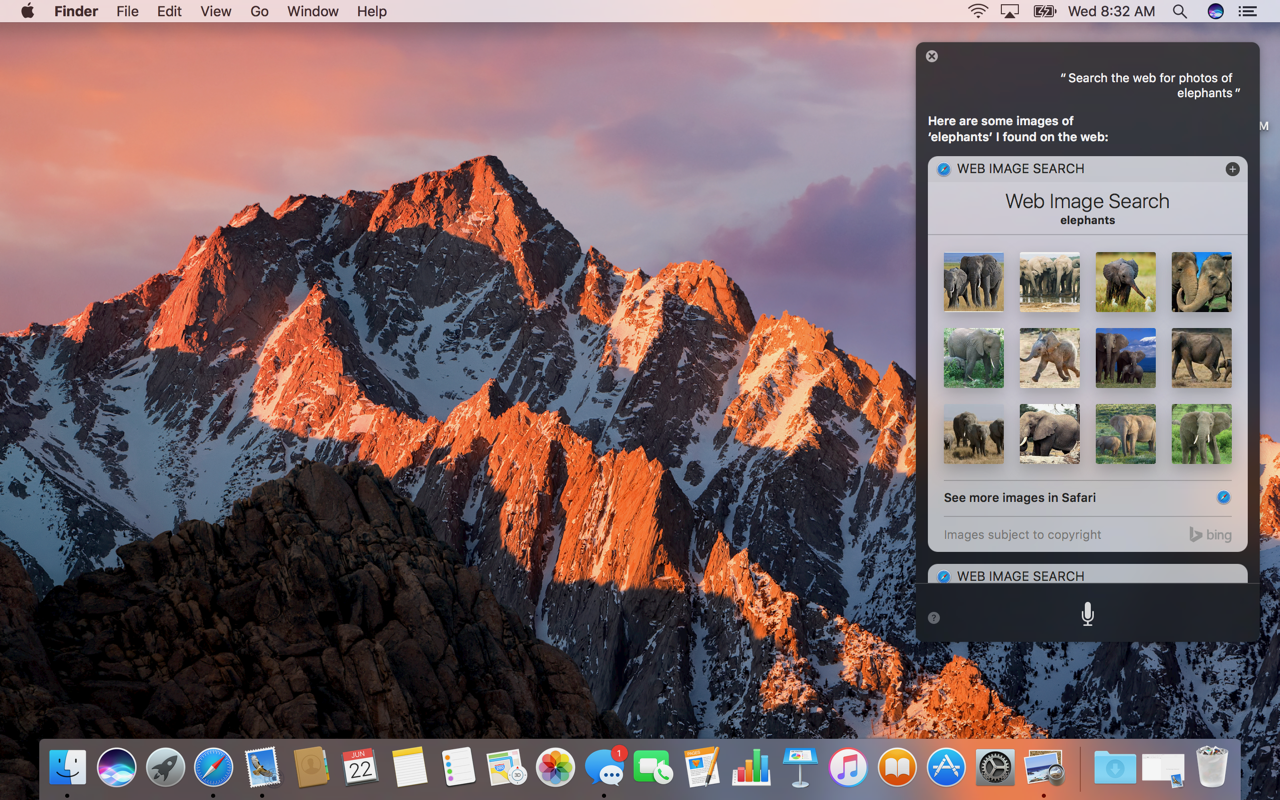macOS Sierra first look review: Slick and subtle changes make for a sophisticated update to your Mac
Siri arrives, iCloud Drive improves and a range of other subtle changes mean that the update is something to look forward to

Your support helps us to tell the story
From reproductive rights to climate change to Big Tech, The Independent is on the ground when the story is developing. Whether it's investigating the financials of Elon Musk's pro-Trump PAC or producing our latest documentary, 'The A Word', which shines a light on the American women fighting for reproductive rights, we know how important it is to parse out the facts from the messaging.
At such a critical moment in US history, we need reporters on the ground. Your donation allows us to keep sending journalists to speak to both sides of the story.
The Independent is trusted by Americans across the entire political spectrum. And unlike many other quality news outlets, we choose not to lock Americans out of our reporting and analysis with paywalls. We believe quality journalism should be available to everyone, paid for by those who can afford it.
Your support makes all the difference.The next version of Apple software for its Mac computers was announced last week and is released in the autumn. I’ve been trying out an early version of this new operating system, which has otherwise only been available to Mac developers, for a week now. Here are some of the highlights.
The first new thing is the name. Previous software releases have been called OS X, but this one is now branded macOS, to fit with other Apple software titles like iOS and watchOS. The latest edition is 10.12, called Sierra, continuing the mountain-related titles that began with Yosemite and followed by the current El Capitan.
The biggest innovation of Sierra is the introduction of Siri to the Mac. As you’ll know, Siri is the voice recognition program on the iPhone, iPad, Apple TV and Apple Watch. And now it’s on Apple PCs.
Microsoft has introduced its voice system, Cortana, to Windows recently and it works well there. But Siri seems especially smoothly integrated and using it is as intuitive as on the phone. Well, almost. On the iPhone you can invoke your friendly, sassy personal assistant by just saying “Hey Siri”. Here you can use a keyboard shortcut, a mouse-click on the dock icon or on the menu bar. These are fine, but I miss being able to call Siri up by speaking her name.
As on the iPhone, you need to be online for Siri to work and in my tests – with the caveat that this is early software – it worked extremely well, but best in quieter environments. Radio 4’s voices had a tendency to insinuate themselves in with mine, for instance.
Siri is set up to work with other Mac apps, such as Safari, iBooks and more. It can do the stuff it does so well on the iPhone like check film details, make a phone call or give you a weather forecast.
What’s more, when you’ve asked it to do an image search through Safari, for instance, you can drag an image it has found from the Siri panel directly on to the computer, to paste it into a document or wherever, and Siri is wise enough to find the highest-resolution version it can.
One of the coolest things, and this will appeal especially to those who don't know their way around the inside of their computer, is that Siri can tell you details like your Mac’s serial number, or how much storage space it has available. Those useful things that you need so rarely that you never quite remember where to find them.

The more you use it, the more enjoyable Siri becomes and I’ve increasingly turned to her this week. Sometimes just because I wondered if she could do something, but increasingly as a way of multi-tasking, letting Siri find the answer to a question while I carried on typing an email, for instance.

This is a significant addition, and the Siri window sits quietly at the top right of the desktop. You can’t move it to another part of the screen, or at least not yet. That would be handy.
Mac users are already familiar with the process of saving documents to the cloud, specifically to iCloud. If you tend to keep a lot of the stuff you use on the Mac desktop, you may be glad that you can opt for these to be automatically saved to iCloud as well, accessible from other computers via iCloud.com or the iCloud Drive app on an iPad, amongst others.
If you’ve ever headed off on a business trip realising the document or web clipping you most needed was stuck on your Mac at home, you’ll see that this system could be a real godsend. Now I just have to remember to save things to the Desktop…
Storing stuff in iCloud will also be easier when Sierra is released. You can already save documents to iCloud but soon you’ll be able to keep other files in the cloud too, so you can save space on your Mac. If you have a recent desktop or laptop you’ll likely have a flash drive rather than a hard drive, so space is probably at more of a premium.
Keeping rarely used files off your machine will help space-wise, and this is one part of Sierra’s optimised storage options.
It’s not all about productivity. In fact, one feature seemed the very opposite. Sierra lets you play video in a Picture-in-Picture window, to distract you while you should be working. It works very similarly to how it does on the iPad, that is, too temptingly well.
Perhaps the thing I’ve liked most so far is the blindingly simple but highly effective Universal Clipboard. If you want to copy a photo or piece or text from your iPhone to your Mac, right now you have to use AirDrop or send by email, say. Now, you simply copy the item on your iPhone or iPad and then when you go to your Mac, you choose paste in an open document or note. And immediately it appears. There’s something faintly magical about this. Mac and iPhone need to have the same Apple ID active.
There were some features I was unable to try, like Auto Unlock. I’ve seen this demonstrated and it looks very cool. The regular way to get into your Mac is to type a password. That’s not a big thing, but it’s way more convenient with Auto Unlock. This recognises your Apple Watch when you’re within 3 metres of it and unlocks it automatically. Of course, you need an Apple Watch for this to work, it doesn’t work with an iPhone, for instance.
Similarly, Apple Pay will be available in the autumn but isn’t yet. Instead of typing in credit card details on compatible sites, if Sierra recognises that your iPhone or Apple Watch is present, it’ll let you pay instantly with that, keeping purchases private and secure. If there’s no Apple Pay device nearby, you just get the usual payment procedures.
And some of the gorgeously fun additions to Messages which will arrive on iOS this autumn will be available on the Mac then, too. So you’ll have to wait until then to see emojis that are three times their current size.
There’s a lot more to come with Sierra, and I’ll be reporting on features as they arrive. It’s already a slicker, more sophisticated OS than El Capitan, but with no loss of intuitive accessibility.
It arrives in all its glory in the autumn, but if you want to get in on the act earlier, a public beta program will be available some time in July so you can try it for yourself. When it arrives, Sierra will be free.
Join our commenting forum
Join thought-provoking conversations, follow other Independent readers and see their replies
Comments